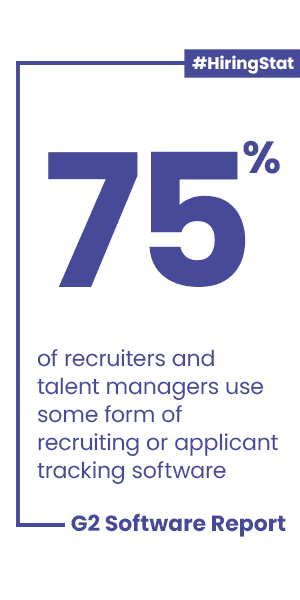To properly use your applicant tracking system (ATS), it’s important to align your recruiting, candidate sourcing, and hiring practices with your company goals.
Many ATS solutions are under-utilized, partly due to a lack of user adoption. The main culprit being that the system was not configured to fit the organization’s unique business model.
If any member of your talent acquisition team does not know how to properly use your ATS, it can cost your company a good hire, increase your average cost-per-hire, and time-to-fill jobs. These problems can be partially solved through user training and improving user adoption.
But with so many corporate solutions and staffing business software to choose from, it’s also important to have a clear idea of what technology your recruiters really need to successfully source, attract and engage top job seekers.
Whether you call it an applicant tracking system or not, if you’re an employer, you need a way to track and manage recruiting workflow and report on hiring activity. And every organization has its own way of managing the recruitment process.
every organization has its own way of managing the recruitment process.
If you think you don’t need an ATS, think again. Even small companies need a system to Source, Hire and Retain top talent.
Let’s start by understanding the purpose of an applicant tracking system. When the tools in your applicant tracking system are aligned with your desired recruiting process, the technology and automation will multiply your recruiter’s capability, boost efficiency, and fill jobs faster.
Begin with an outline of your current process and ATS best practices.
Next, include your recruiters and hiring managers in the review process. Ask them to tell you what works, what’s not working, and what would help make their job easier.
Many repetitive and time-consuming tasks can be automated to speed up and optimize your talent acquisition team’s workflow, such as:
Communication tools and collaboration must be at the heart of any applicant tracking system. Think of it as a “people relationship management” platform for keeping everyone informed and engaged through every step of the hiring process.
Using ATS best practices, task automation can give recruiters more time to focus on the human aspects of hiring, such as candidate engagement.
Your applicant tracking system serves as a platform for recruiting and a key component in a complete ecosystem of corporate solutions for tracking hiring activity. The ideal ATS will integrate with other vendor partners, such as job boards as well as internal and external systems that are used in throughout the process, including:
Adopting new technology is beneficial, but only if you’re able to measure the results.
A well-configured applicant tracking system will streamline tasks, support candidate engagement, and deliver the reports needed to drive process improvement and make better hiring decisions.
To get the most out of your ATS, having your own designated system administrator and Subject Matter Expert is ideal. Or call your ATS provider and about system optimization services and tips to streamline the recruitment process.